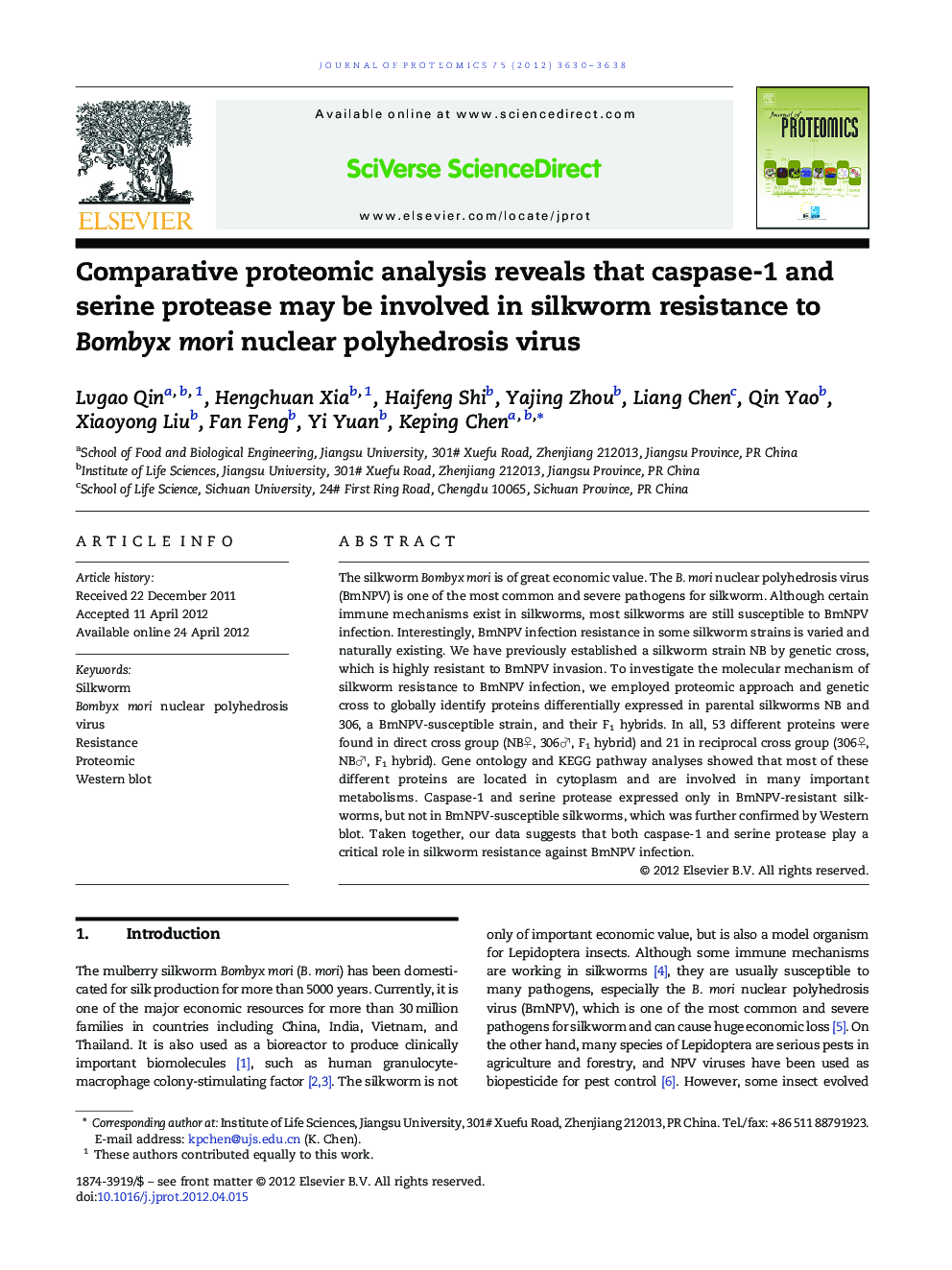| Article ID | Journal | Published Year | Pages | File Type |
|---|---|---|---|---|
| 1225628 | Journal of Proteomics | 2012 | 9 Pages |
The silkworm Bombyx mori is of great economic value. The B. mori nuclear polyhedrosis virus (BmNPV) is one of the most common and severe pathogens for silkworm. Although certain immune mechanisms exist in silkworms, most silkworms are still susceptible to BmNPV infection. Interestingly, BmNPV infection resistance in some silkworm strains is varied and naturally existing. We have previously established a silkworm strain NB by genetic cross, which is highly resistant to BmNPV invasion. To investigate the molecular mechanism of silkworm resistance to BmNPV infection, we employed proteomic approach and genetic cross to globally identify proteins differentially expressed in parental silkworms NB and 306, a BmNPV-susceptible strain, and their F1 hybrids. In all, 53 different proteins were found in direct cross group (NB♀, 306♂, F1 hybrid) and 21 in reciprocal cross group (306♀, NB♂, F1 hybrid). Gene ontology and KEGG pathway analyses showed that most of these different proteins are located in cytoplasm and are involved in many important metabolisms. Caspase-1 and serine protease expressed only in BmNPV-resistant silkworms, but not in BmNPV-susceptible silkworms, which was further confirmed by Western blot. Taken together, our data suggests that both caspase-1 and serine protease play a critical role in silkworm resistance against BmNPV infection.
Graphical abstractFigure optionsDownload full-size imageDownload high-quality image (219 K)Download as PowerPoint slideHighlights► Find anti-NPV related proteins and use WB to confirm it. ► Use both direct and reciprocal cross groups for research. ► Identify anti-NPV related proteins at overall level.
